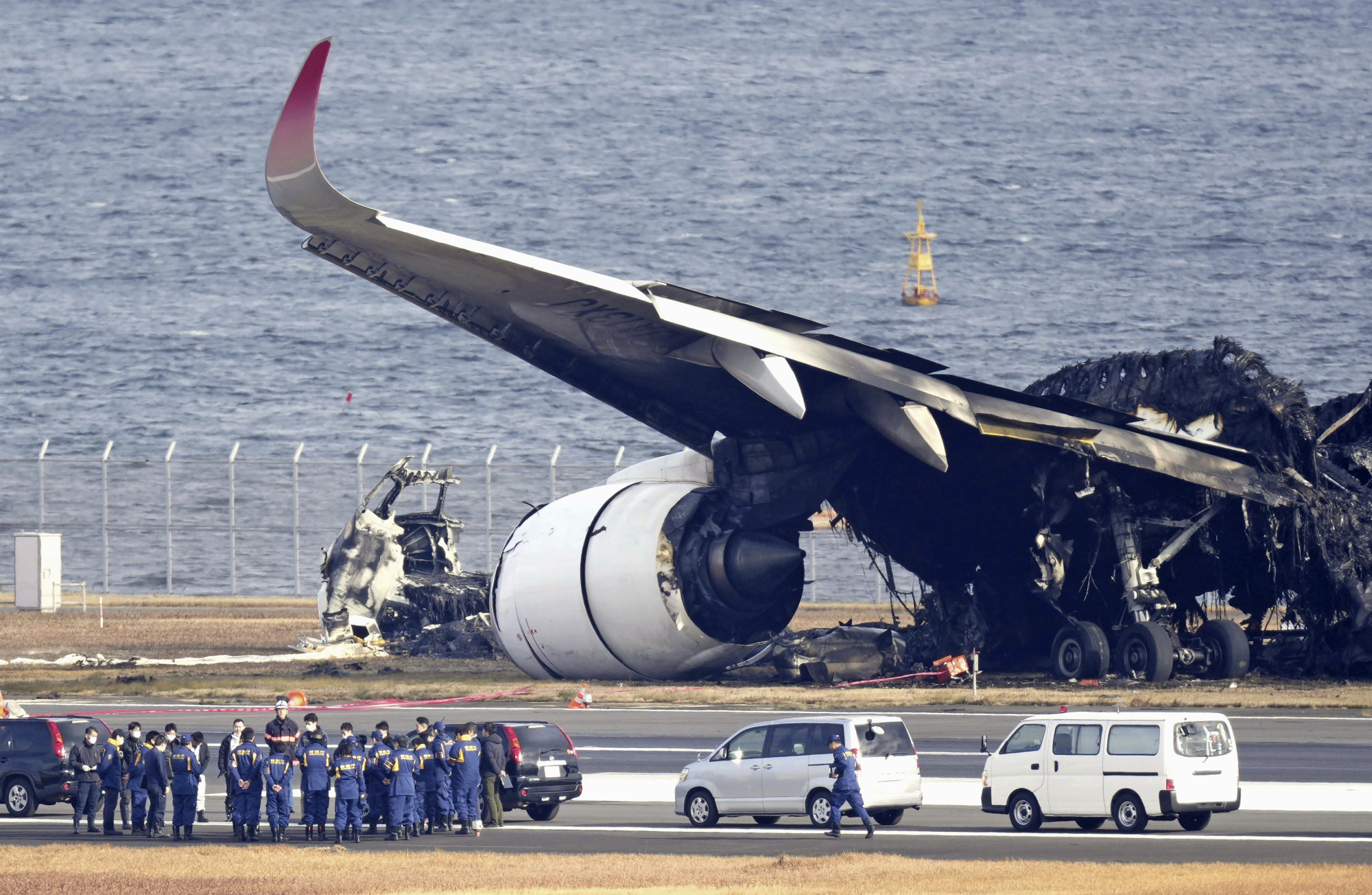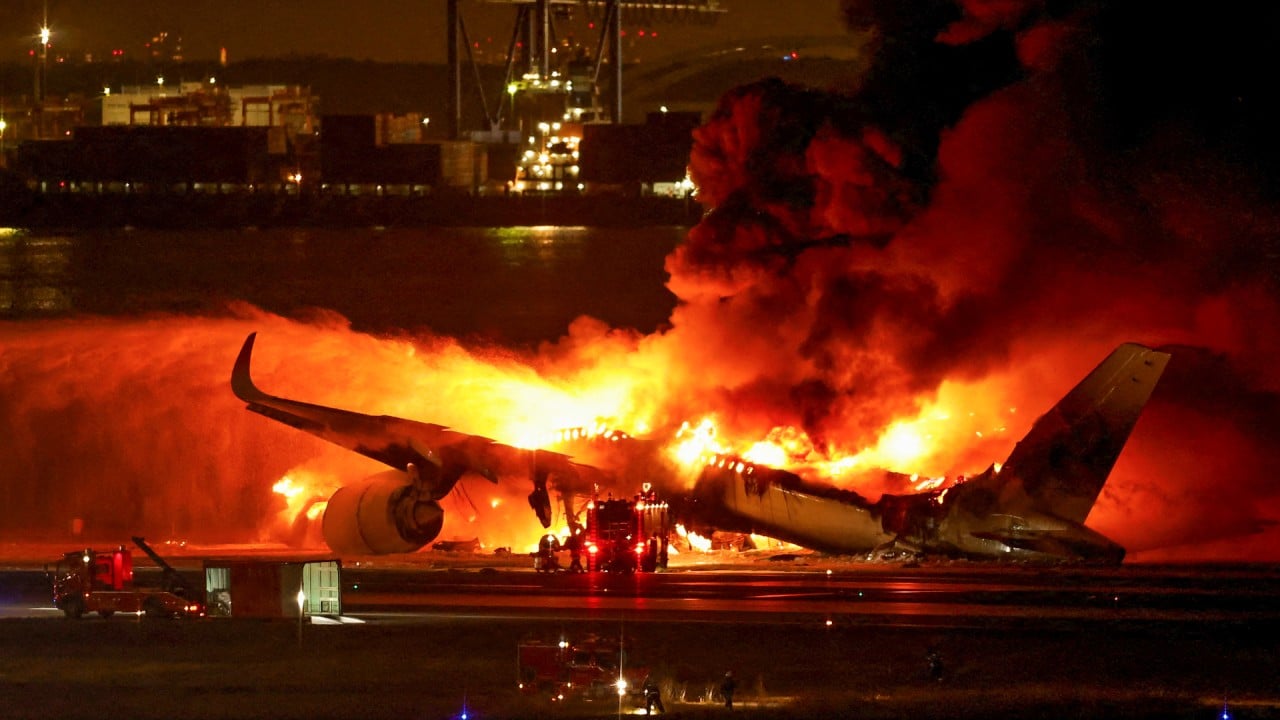But according to national broadcaster NHK, the Japan Airlines pilots in the cockpit did not know about the fire until being informed by the cabin crew.
The chief flight attendant, one of nine on board, reported to the cockpit that the plane was burning as the cabin crew needed permission to open the emergency exits, NHK reported.
By this time, the cabin was filling with smoke and getting hotter, with babies crying and people begging for the doors to be opened, footage showed.
Crashed Japan coastguard plane entered runway without permission: transcript
Crashed Japan coastguard plane entered runway without permission: transcript
In one video clip, a young voice can be heard shouting: “Please let us out. Please. Please open it. Just open it. Oh, god.”
There were eight emergency exits but the evacuation began from two slides at the front of the plane because of the fire.
Only one other exit, at the rear left, was safe from the fire, but the intercom system was no longer functioning, so the cockpit could not give the go-ahead, JAL said.
The crew in the back deemed it was urgent for the passengers to disembark from the back door and opened it anyway, as they are trained to do.
They used megaphones and their own voices to give instructions to the passengers.
It took 18 minutes to evacuate the entire plane, with the pilot the last person to set foot on the tarmac at 6:05pm (local time).
Soon afterwards, the entire aircraft was an inferno and dozens of fire engines were trying to put out the blaze. That process ended up taking eight hours.
At least one pet dog and one cat had to be left on the plane and died, the airline said.
The flight recorder and voice recorder from the coastguard plane had been found, but those of the passenger jet were still being sought.
But the coastguard plane was reportedly instructed to go to a spot near the runway.

Earlier on Wednesday, NHK had reported that the pilot, Genki Miyamoto, 39, said immediately after the accident that he had permission to take off.
Japan has not experienced a serious commercial air crash for decades.
In 1985, a JAL jumbo jet flying from Tokyo to Osaka crashed, killing 520 passengers and crew, in one of the world’s deadliest crashes involving a single flight.
The world’s worst civil aviation disaster also happened on the ground when two Boeing 747s collided at Los Rodeos Airport in Tenerife in 1977, killing 583 people.


